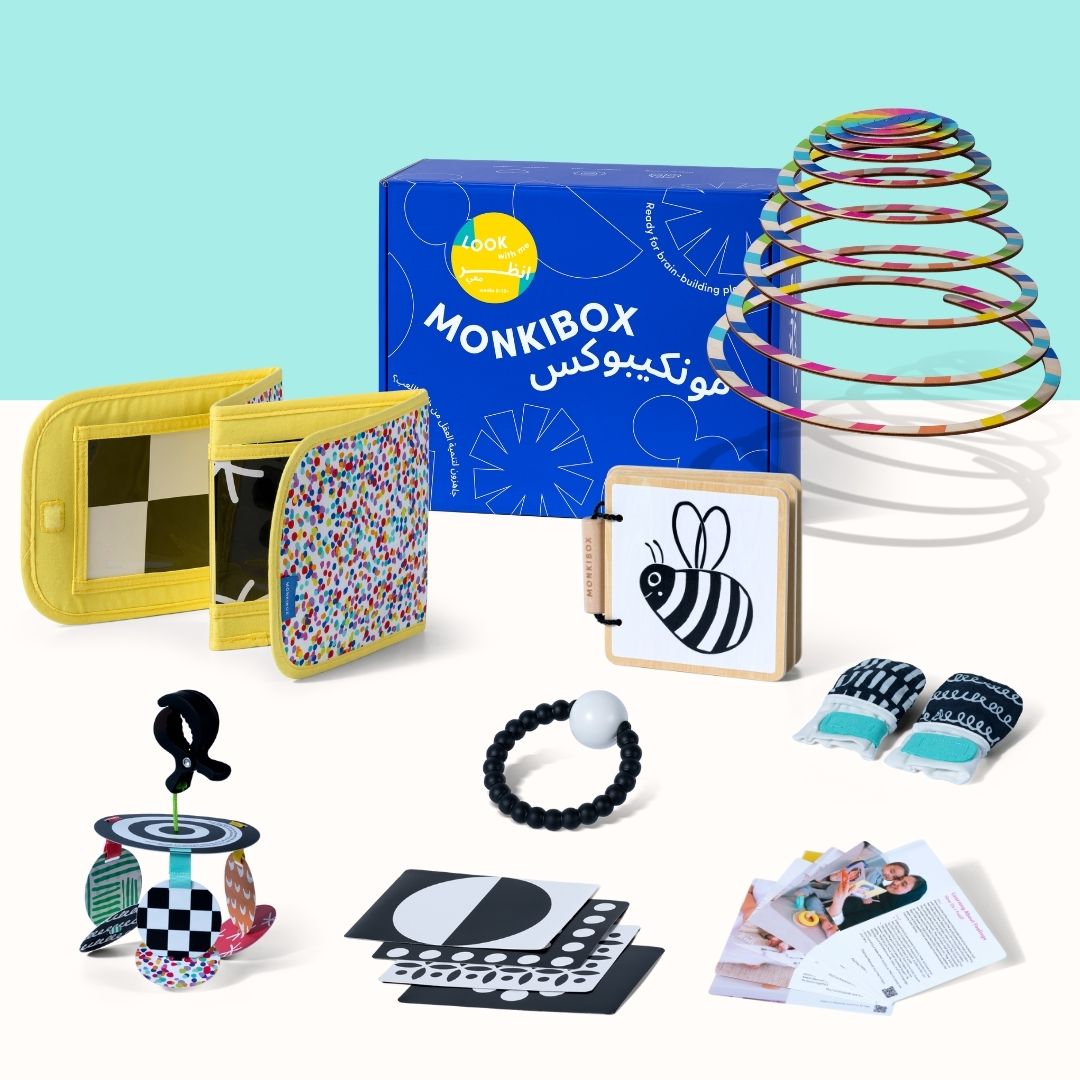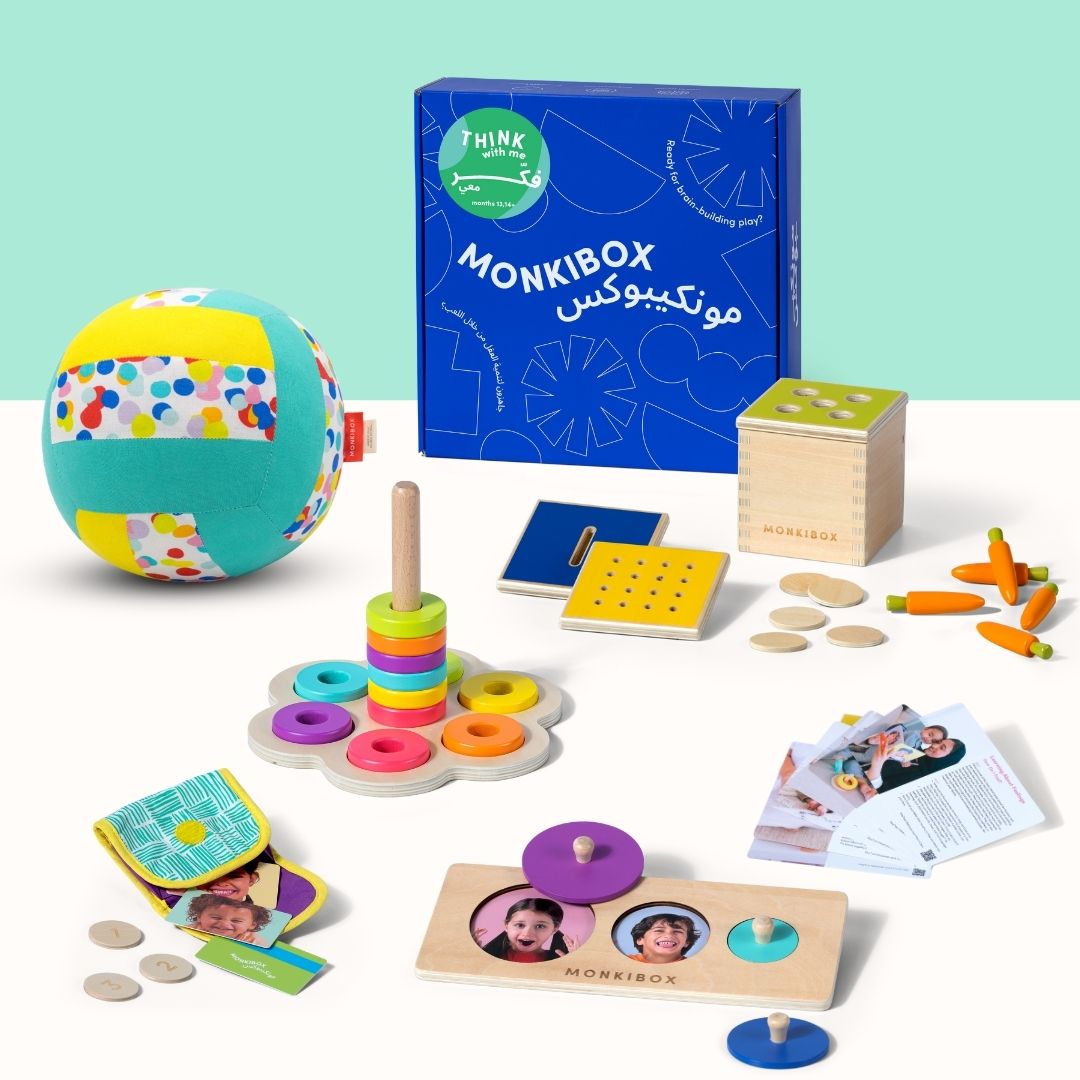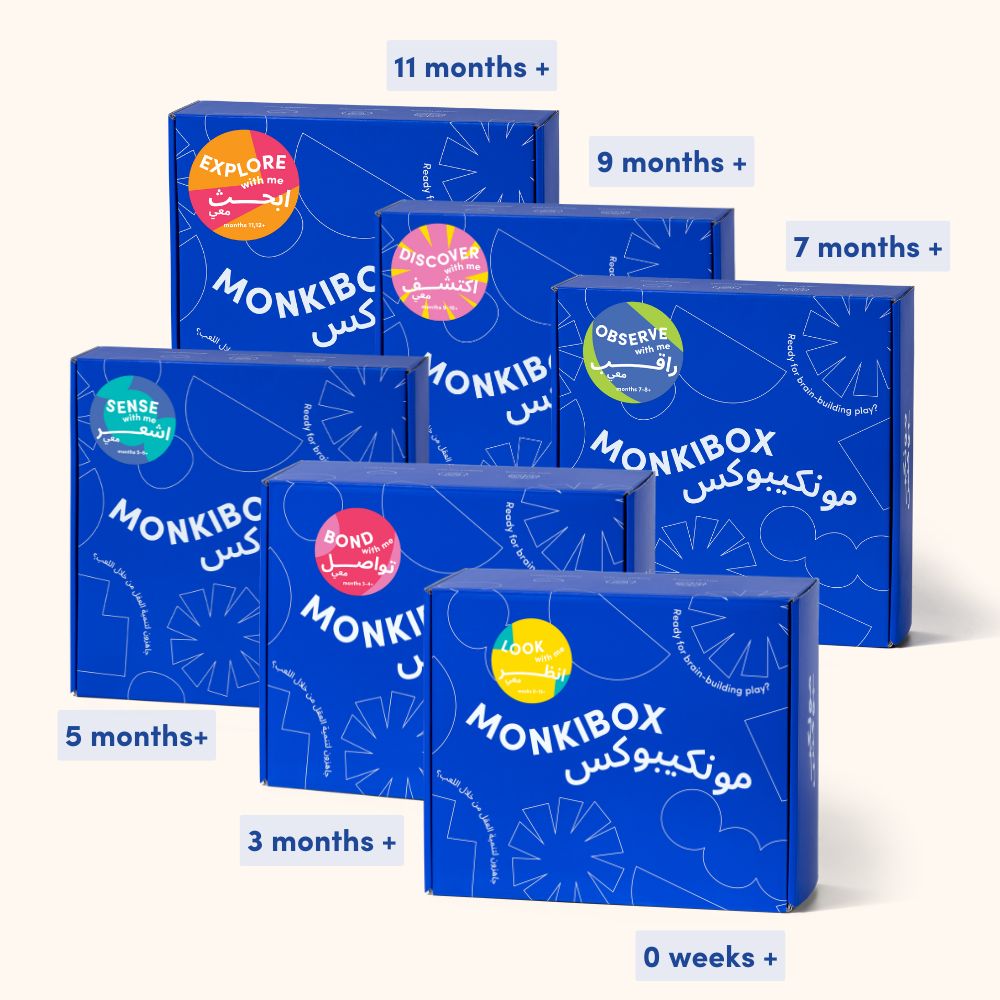Parenting with Me
Week 16: Your Baby’s Stages of Grasping Objects
Grasping is a key motor milestone that follows your baby’s growing confidence in reaching. Once grasping is mastered (typically by 9–10 months), brace yourself for the next stage—throwing! Here’s a breakdown of the stages of grasp development and when to expect them: 4 Months: Ulnar Palmar Grasp Your baby can hold an object placed in their hand, wrapping one or two fingers (usually the pinky and ring f inger) around it. The grip isn’t firm or controlled yet, and the thumb is not involved 5 Months: Palmar Grasp Now your baby has better control and wraps more fingers around the object, centering it in the palm. Still no thumb involvement, but there’s more strength and coordination. 6 Months: Radial Palmar Grasp Your baby begins using the thumb as a stabilizer while gripping an object. This is an early sign of refined control, although the thumb still doesn’t play an active role. 7 Months: Raking Grasp Your baby tries to grab objects using a raking motion with spread fingers. Once contact is made, the fingers close around the item. This grasp strengthens hand muscles and improves coordination. 8 Months: Radial Digital Grasp Here, your baby uses the pads of the thumb and fingers (excluding the forefinger) to lift objects. It’s a transition phase—a prelude to the pincer grasp. Thumb control continues to improve. 9 Months: Pincer Grasp This is a major fine motor milestone. Your baby uses the tips of the thumb and forefinger to pick up small items with precision, like beads or bits of food. The pincer grasp lays the foundation for self-feeding, buttoning, and writing later on. What is the Pincer Grasp, and How Is It Different? The pincer grasp allows babies to pick up small objects using only the tips of the thumb and forefinger. This is more precise than earlier grasps (like palmar or raking), which rely on the entire hand or the pads of the f ingers. How Does the Pincer Grasp Evolve from the Radial Digital Grasp? The radial digital grasp (seen around 8 months) uses the thumb and fingers, but lacks the fine control needed to isolate the thumb and forefinger. As hand-eye coordination and thumb control improve, babies refine their movements to achieve the precise, coordinated motion required for the pincer grasp. Want to support your baby’s grasp development? MonkiBox Montessori-inspired toys are designed to nurture every milestone with age-appropriate play tools and expert-backed guidance. Start the development journey with MonkiBox today!
Why Age-Appropriate Toys Matter for Child Development
Toys are your baby’s window to the world around them. They play a key role in developing motor, cognitive, emotional, and social skills. However, what many parents often miss is that it's not just any toy, but thoughtfully crafted, age-appropriate toys that truly stimulate early brain development, ignite creativity, promote critical thinking, and enhance cognitive abilities. The purpose of age-appropriate toys is to match the child’s current learning capacity and physical abilities, ensuring they are challenged—but never frustrated—or bored. Imagine handing a complex puzzle to a sixmonth-old or a simple sensory ball to a preschooler. Without alignment, toys lose their developmental value Why This Toy? – Understanding the Criteria for Toy Selection 1. Safety Comes First: - Newborns should not be given toys smaller than 3 cm in width and 6 cm in length to prevent choking hazards. - Battery-operated toys must have securely enclosed battery compartments. - Avoid toys with toxic materials, lead paint, sharp edges, or excessive noise. 2. Developmental Fit: - For a six-month-old, focus on sensory development with rattles, sensory mats, textured balls, and high-contrast image books or cards. - For toddlers, support emerging fine and gross motor skills, memory, and language development with treasure baskets, stickers, simple puzzles, and pouring cups 3. Engagement and Interests: - Choose toys that align with your child’s interests. Some children enjoy crafting, while others prefer dolls and open-ended pretend play. - According to child development specialists, toys should also provide opportunities for caregiver interaction. Dollhouses, kitchen sets, craft supplies, and blocks all encourage collaborative play and help refine social skills. How the Play Boxes by MonkiBox Support Development in Newborns (0–1 Month) Week 0: Cuddles and skin-to-skin contact are crucial for emotional and physical development. Holding your baby close regulates body temperature, heart rate, and breathing, while building a strong bond and emotional security. Week 1: Continued skin-to-skin contact supports breastfeeding, soothes your baby, and reduces stress hormones, promoting calmness and attachment. Week 2: Tummy time strengthens neck, shoulder, and arm muscles, laying the foundation for rolling and crawling. Start with short, supervised sessions, using soft mats and high-contrast cards from the Play Boxes by MonkiBox Week 3: Your baby’s vision is developing. High-contrast black-and-white toys and books stimulate visual focus and support brain growth. Week 4: To prevent flat head syndrome, incorporate varied positions and gentle head-turning during play. Tummy time and side-lying help develop a balanced head shape. Gentle rattles and crinkle toys in the Play Boxes by MonkiBox stimulate auditory senses and reflexive grasping. If your baby shows limited movement, has trouble lifting their head during tummy time, or does not respond to sounds, consult your pediatrician. In the meantime, make tummy time more engaging with the “Look With Me” Play Box by MonkiBox. How the Play Boxes by MonkiBox Support Development in 2–3-Month-Old Infants Week 5: Your baby is becoming more alert and begins to focus on faces and track slow-moving objects. High-contrast images stimulate visual development. Skin-to-skin contact and gentle play strengthen bonding. Week 6: Visual tracking improves, and your baby starts responding to voices and sounds. Talking, singing, and soft musical toys support auditory and emotional development. Rattles begin to connect sound and movement. Week 7: Eye tracking becomes more coordinated. Moving black-and-white cards side to side builds visual engagement. Daily tummy time supports strength and motor milestonesWeek 8: If tummy time is challenging, try alternatives like a rolled towel under the chest or placing toys just out of reach. These variations promote head lifting and arm strength. Week 9: Strengthening leg muscles early supports future milestones. Bicycle leg movements, supported standing, and kicking games develop coordination. Week 10: The first year is vital for brain growth. Sensory experiences, responsive interactions, and safe exploration form strong neural connections. Week 11: Support brain development with language play—talk, sing, and respond to your baby. Serve-and-return conversations build early communication skills. Week 12: Playtime stimulates movement, sensory development, and social engagement. Offer ageappropriate toys that spark curiosity and physical growth. If your baby doesn’t make eye contact by 3 months, consult a pediatrician. How the Play Boxes by MonkiBox Support Development in 3–4-Month-Old Babies Week 13: Take your baby on a house tour. Naming objects supports early language and cognitive recognition Week 14: Reaching and grasping build hand-eye coordination and fine motor control. Colorful, graspable toys are ideal. Week 15: Mirrors foster face recognition and promote self-awareness. Babies begin inspecting their hands with intention. Offer lightweight toys to encourage movement. Week 16: Grasping evolves from reflexive to voluntary. Offer toys that support manipulation and fine motor growth. Week 17: Engage in serve-and-return conversations. Responding to your baby’s sounds builds brain connections and language skills. Week 18: Pair tummy time with sensory toys to build strength and prepare for crawling. Textured mats, toys, and music enhance the experience. Week 19: Hand-to-hand transfer improves coordination and bilateral motor control. Encourage this by offering easy-to-hold toys. Week 20: Everyday interactions like face-to-face play and using mirrors support recognition and social development. Sensory-rich toys in the “Bond With Me” Play Box by MonkiBox enhance sight, sound, and touch. Top 10 No-Cost Toys for Infants, Toddlers, and Preschoolers Household items can be powerful tools for creative, developmental play. - Soft scarves: engage infants through sensory play and peekaboo, toddlers for dancing, and preschoolers for costumes. - Cardboard boxes: use them for crawling tunnels, cars, houses, forts, or puppet theaters. - Pots and wooden spoons: promote auditory stimulation and hand-eye coordination. - Plastic containers and lids: ideal for sensory bins, stacking, or matching. - Wallets and playing cards: build fine motor skills and imagination. - Measuring cups and spoons: support sensory exploration and basic math. - Other items: whisks, sponges, blankets, bottles (as shakers or pins), leaves, and stones—all enhance sensory and imaginative play. Always supervise play and ensure items are safe and clean. Why You Should Prioritize Your Child’s Play Routine A regular play routine is critical for healthy brain development, emotional regulation, and social skills. Research from Harvard’s Center on the Developing Child and the American Academy of Pediatrics shows that structured, age-appropriate play fosters resilience, strengthens parent-child bonds, and lays the foundation for lifelong learning. Play with Free Stuff: No Batteries Required! Children often prefer simple, everyday objects over flashy toys. Encourage creativity with household items like scarves, pots, or kitchen utensils. Go on nature hunts or create crafts from recycled materials. Openended play encourages social skills, imagination, and safe risk-taking. Conclusion Age-appropriate toys—especially everyday objects—play a vital role in every stage of your child’s development. Through meaningful, hands-on play, you nurture imagination, independence, and a love for learning. And remember, your presence, engagement, and time remain the most powerful tools in your child’s journey. For more play ideas and expert tips, visit the MonkiBox Community blog.
Peeling Activities for Babies: How to Strengthen the Pincer Grasp Through Play
One of the easiest ways to practice your baby’s pincer grasp is to give them opportunities to peel things. Here are our top 5 ideas.
Why Teach Your Baby to Drink from an Open Cup?
Drinking from an open cup is a major milestone. Learn why this skill is crucial and how to help your baby master it.






